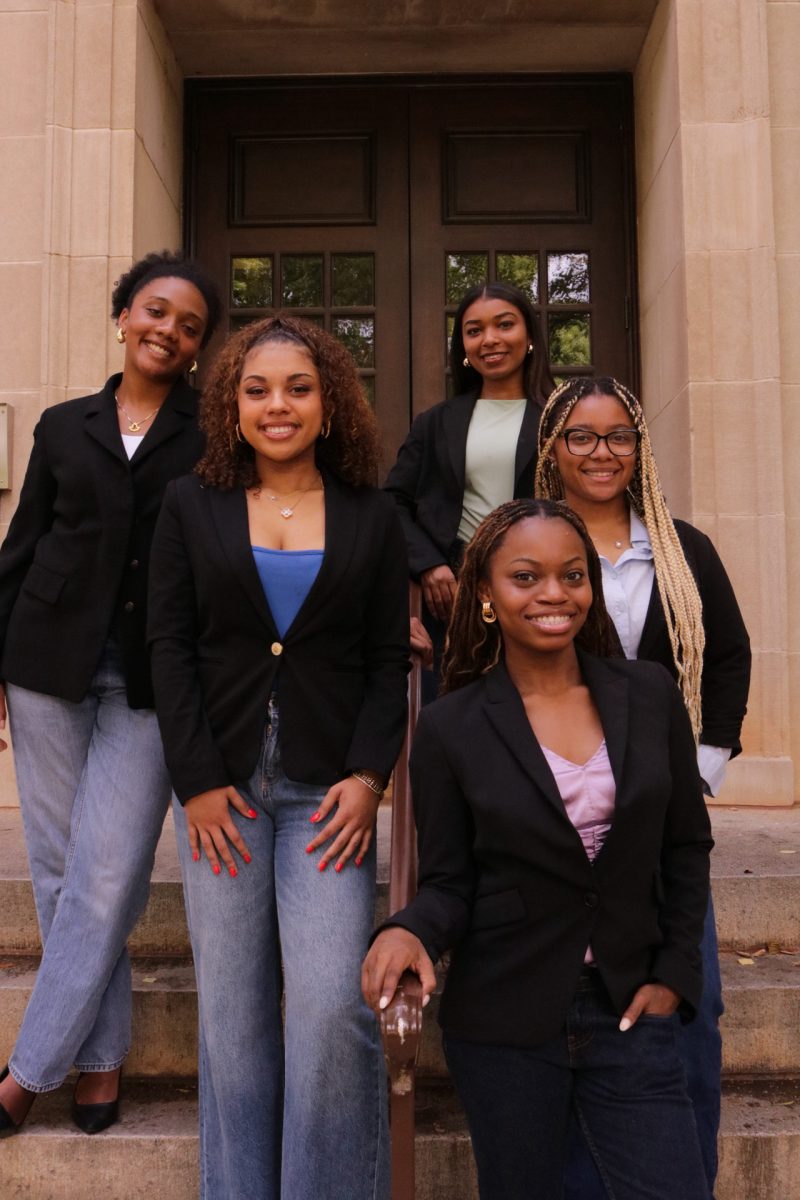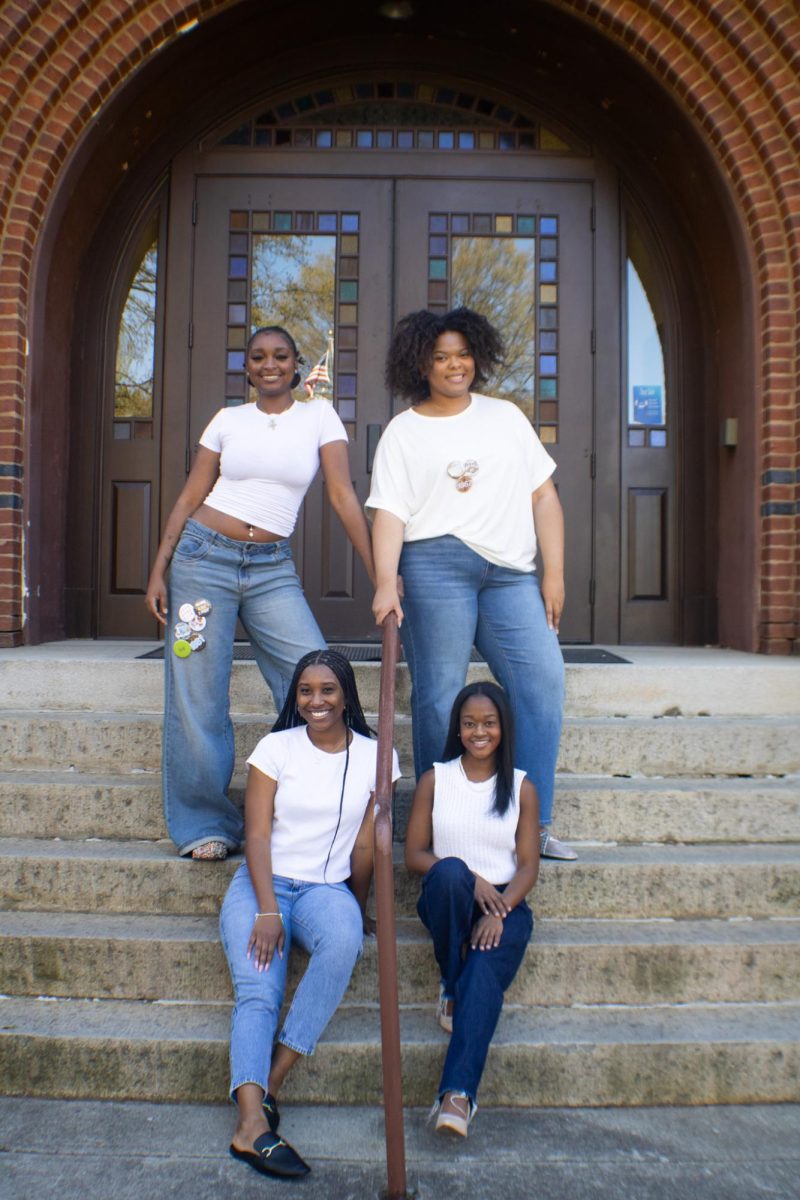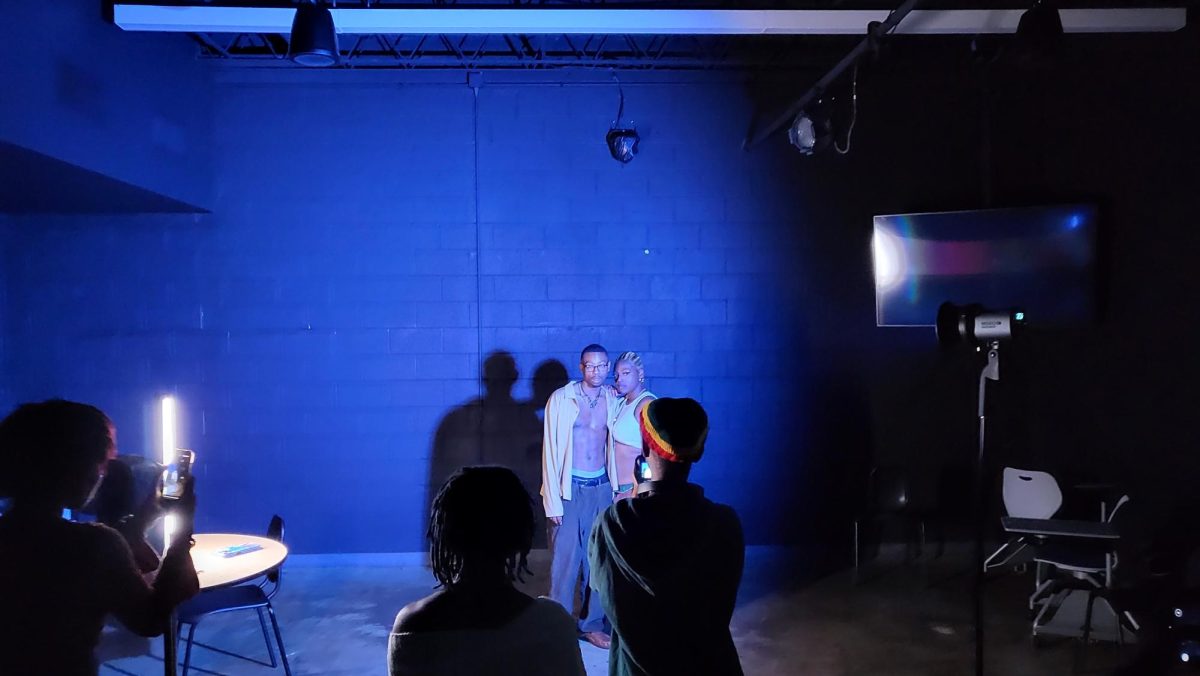As an institution, Spelman holds an extensive timeline of history and creativity. The heart of Camille Olivia Hanks Cosby, Ed.D., Academic Center is The Spelman Museum of Fine Art. Since opening its doors in 1996, it has provided students with rich art dedicated to displaying work by and of African diasporic women, the only Museum in the United States to do so.
Threaded, the current exhibition, presents contemporary art by Black women using various textiles, including cotton, wool, silk, lace, and hand-dyed fabrics. Prominent artists featured are Bisa Butler, Loretta Pettway, and Louisiana Bendolph. While all museum exhibitions are special, Threaded separates itself from them by including a plentiful view into Black women’s expression of love and creativity and, most importantly, survival.
Most of the exhibitions are quilted works. Some resemble blankets made with love by Black women artists who needed to keep those they cared for most warm. Others are large enough to envelop their viewers in their folds, making them feel and understand the meaning behind the fabrics. Ultimately, this is the meaning behind knitting and crocheting for Black women: to tell a story that future artists and art lovers can preserve for years to come.
Someone who would understand this is Ta’Niyah Armstrong, a current junior Psychology major with a concentration in Mental Health. Armstrong has been crocheting on and off for the last year.
“My Spelman sister Jae invited me to Lower Manley to crochet! That was about ten months ago, and I haven’t stopped since!” she stated.
Spelmanities like Armstrong prove that individuals interested in art and its deeper meaning only need a little but a creative outlet and tools to carry out their visions. While crocheting means something different to everyone, Armstrong says the hobby allows her to relax and be with herself.
“It’s amazing to see what I’m able to make with just my two hands. It’s definitely helped me to learn myself and what it means to create from myself.” she articulated.
Ms. Karen Lowe, the curator in residence at the Spelman Museum, has first-hand experience with creations made for and by Black women artists. Ms. Lowe also works closely with the AUC Art Collective, teaching “Entering the Art World,” mentoring students in curatorial aspects in the student exhibition at the Woodruff Library, and other initiatives. Past exhibitions have featured playlists of related music, also curated by Ms. Lowe.
“The act of creating, whether it’s crocheting, quilting, or any other ways of making textiles, is really integral to the survival of black women. There was a time when those quilts weren’t made for aesthetic purposes but for practical purposes… where we’ve created things to help push forward our survival.” she disclosed.
An example of this would be Gee’s Bands Quilts. Gee’s Band is a community of Black women located in Alabama. The quilts in this collection work to “integrate materials and techniques that extend beyond the traditional category of ‘quilt.’” according to the Spelman Museum. The artists are part of a generational effort to keep the art of quilting alive within the community.
Collections such as Gee’s Band Quilts prove knitting and crocheting provide a sense of agency for Black women and a community filled with support and familiarity. Armstrong is fully aware of this as crocheting brings her closer to her grandmother, who passed away this past summer. “She didn’t crochet, but she sewed a lot and taught me how to sew, and she was very proud of my work, which encourages me to get better…” she divulged.
The Spelman community has found a way to continue the legacy of knitting and crocheting within the gates. The club, Knittens, is a registered student organization that provides a community for “AUC fiber artists of all levels!” The club encourages its members to develop their craft at community workshops.
Armstrong attended her first Knittens club meeting this semester, as she always wanted to know more about it. “It seemed a bit intimidating, but I’m glad I went,” she said.
Knittens supports students through their crocheting process in many ways. “I think Knittens has definitely pushed me to be more intentional about being involved on campus. I wish I got the drive earlier in my college career but I suppose it’s never too late to be involved. It’s also introduced me to many people with the same interests as mine,” Armstrong reflected.
While crocheting and knitting can seem intimidating, there is a sense of calmness that Black women can receive from the activity, which is necessary for the hectic nature of our experience.
When asked if she knew about Knittens before the exhibition’s opening, Ms. Lowe remarked, “I was not, but I am pleasantly surprised by it.”
Armstrong holds the same sentiment about Threaded. She continues, “I think it’s amazing to see it promoted, especially in the context of Black culture where fabric work, such as sewing, knitting, and crocheting, plays a huge role in shaping the Black experience so much that we don’t even realize until conversations about that one blanket every Black household has or that one old pair of pants you refuse to throw away because your grandmother patched it up.”
After speaking with a current crocheter and an expert in Black women artists in the textile medium of art, I believe anyone can start crocheting, regardless of prior experience. Ms. Lowe tells students to “dream big and think outside the box.”
“Don’t be afraid to create something that’s in your imagination that you may not have seen before, but also do your research,” she advises.
Armstrong concurs and informs other student artists to go for it. “Literally attend a Knittens meeting or go up to someone you know that crochets or knits and ask them to teach you. You don’t need anything special to start, I promise you. I think when you get in your own way, that’s the hardest thing about crocheting and knitting.” she assures.
“Go to museums and see original art that can inform you on how to make things. Look up artist’s work so you can be inspired in some sort of way, but let that inspiration allow you to stretch beyond what you see there to create something completely unique and mind-blowing.” Lowe concludes.
Having personal experience with the Museum and being surrounded by the original handiwork of Black women for most of my life, I can confirm that the artful experience of knitting or crocheting is not only fun but great for the soul of a Black woman. The Spelman Museum continues to impact Black women, artists, and viewers as it benefits the overall experience at Spelman and in general. It does not matter what kind of art one is interested in or if one doesn’t believe they can create something. As Black women, we can make more than we think we can. So, why shouldn’t we uplift a harmonious experience such as knitting or crocheting?
More information is available on Instagram and the museum website if any students are interested in supporting the Spelman Museum of Fine Art or Knittens. The exhibition is available at the Spelman Museum for the spring 2024 semester from February 2 – May 24, 2024. Threaded is curated by Liz Andrews, Ph.D., and Karen Comer Lowe, with Brandy Pettijohn, Ph.D.The Museum is open and free of charge to the public from 12 pm to 5 pm, Wednesday through Saturday.







Wanda Lloyd • Apr 30, 2024 at 2:52 pm
Very nice article, well-written and engaging. Nigella, keep up the good work.